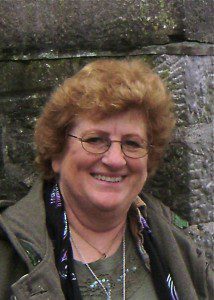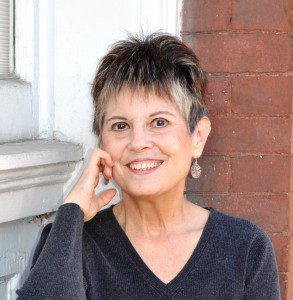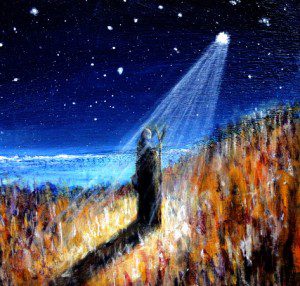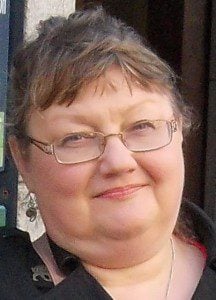 On 31st October 2011 I wrote a letter to my ancestors. I began by saluting both lines but principally addressed my maternal lineage because I felt there were restless ancestral spirits there. At that Samhain I decided that I needed to perform a ritual of forgiveness to help heal some of the unhealthy limbs of my family tree.
On 31st October 2011 I wrote a letter to my ancestors. I began by saluting both lines but principally addressed my maternal lineage because I felt there were restless ancestral spirits there. At that Samhain I decided that I needed to perform a ritual of forgiveness to help heal some of the unhealthy limbs of my family tree.
Two years prior, my mother had gone into a nursing home and the few ancestral items not dispersed with her house sale a few years earlier, needed to be rehomed. My mother had a sewing cabinet belonging to her great grandmother. None of her children or grandchildren being inclined towards sewing, I negotiated a transfer to my cousin. She offered to swap a portable writing desk (sometimes called a lap desk or travel desk) that had belonged to my great uncle. Since I am a writer this seemed perfect.
The portable writing desk came to me in a very dilapidated state. A friend was a furniture restorer who well understood the dysfunctional ways of families. I told her some of my family war stories; she shared hers. But we also knew that the restoration work commencing was more than just physical. There seemed to be some greater, deeper significance. From her restoration work she was able to give me a few details of the story told in the wood and craft. For instance, we found an inscription indicating that the ancestral object had belonged originally to my great-grandmother. It had been presented to her my great-great grandmother as a Christmas present in 1875. Helga could tell that it was not a mass produced object. Indeed, she felt it was probably hand made by a family member or close friend as the interior was a bit roughhewn. We speculated that the clock was ticking down to Christmas Eve and some corners needed cutting to get the present finished in time.
With the lap desk restored I felt led to carry out another kind of restoration. A writer writes. I decided to communicate by writing a long letter with the aim of forgiving the ancestral trespasses. So I pulled it out and wrote the letter on the lap desk at Samhain, when the veil for communication between spirit and material world is thinnest. My mother had died earlier in 2011 and I reflected on her life in the months since her passing. I knew of the damage inflicted by her parents’ marital implosion in 1929. I also knew that my generation felt the rumblings of that event, too.
I have a cousin, an only child, who has rattled the family skeletons with me over the years. We both have an interest in genealogy. I cannot say what motivates her interest. But if I am brutally honest with myself, my own motivation was to piece together the half-stories and to penetrate the secrets that illuminate shame.
Brene Brown writes that shame is incredibly destructive. Guilt, the proper acknowledgement of responsibility for one’s actions and their consequences, is appropriate. But shame is never appropriate. I wanted the stories because I wanted to understand the shame and to finally let them all, in their graves, to rest in peace.
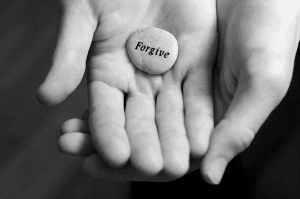 In the letter that night I did not make a forensic exposition of sins or failings. I did acknowledge that individual’s actions had caused damage. But I also asked them, “How were you hurt?” Over eight pages I scraped away the blame and endeavoured to excavate the love that, however brief, conditional or flawed, existed at source. I acknowledged that my grandparents, aided and abetted by their own parents, created a toxic brew for their offspring to suckle.
In the letter that night I did not make a forensic exposition of sins or failings. I did acknowledge that individual’s actions had caused damage. But I also asked them, “How were you hurt?” Over eight pages I scraped away the blame and endeavoured to excavate the love that, however brief, conditional or flawed, existed at source. I acknowledged that my grandparents, aided and abetted by their own parents, created a toxic brew for their offspring to suckle.
I quote briefly from the final page.
Where did the love go? Because I want to find it. I am acknowledging the pain and damage, but not judging the individuals. All of those involved were hurt…
Take heart from this. The love was not for nought. Your descendants have had good careers, travelled the world, had children or no children, done small and large kindnesses. They have done more than just paid the bills and done their duty. They have had their moments of being and joy.
I wish for all of you in spirit to be at peace. What mistakes have been made are done. Let the love stand and be acknowledged. Let the love heal the points where the mistakes created fissures in all of these wonderful, unique ornaments on our family tree.
I signed the letter and put it into the lap desk. In it I keep a few family photos, a copy of my partner’s mother’s funeral eulogy, my mother’s obituary and her World War II dog tags.
Afterwards I felt an easing around my grandparent’s spirits, who in life co-created epic family drama and disharmony. Ironic since their romance had started in a music shop where my grandmother had gone to buy a metronome. They shared an interest in music but had so little gift for keeping time and creating harmony. But I sense a shift there now. The naming without the shaming or blaming seems to have made them rest more easily in spirit. Or in forgiving them I have healed that rift or rancour I inherited from the stories with their shame and blame attached.
This year I am going to perform a ritual around another relative from that generation, who also inflicted harm. Relatives keep sending me items that originated with him. I feel he would like the same ritual done for him. I feel his spirit yearns for forgiveness. He was an artist so I think I will need paint brushes and paper to connect and then set free.
Can we really know that someone in spirit could feel sorrow for actions done when they are alive? There is no empirical way of proving this. But it feels right and perhaps that is one of the tasks of the generation at least one or two removed from seminal family conflicts. Maybe it is in our blood or there is some special strand in the helix of our DNA that tingles telling us these things. It feels rather like those pulsing leaves on ancestry.com. Someone in the line wants to communicate. This is my response.
Bee Smith guides tours in her betwixt and between region of Ireland through Irish Blessings Tours. She is also a blogger for Sagewoman.


